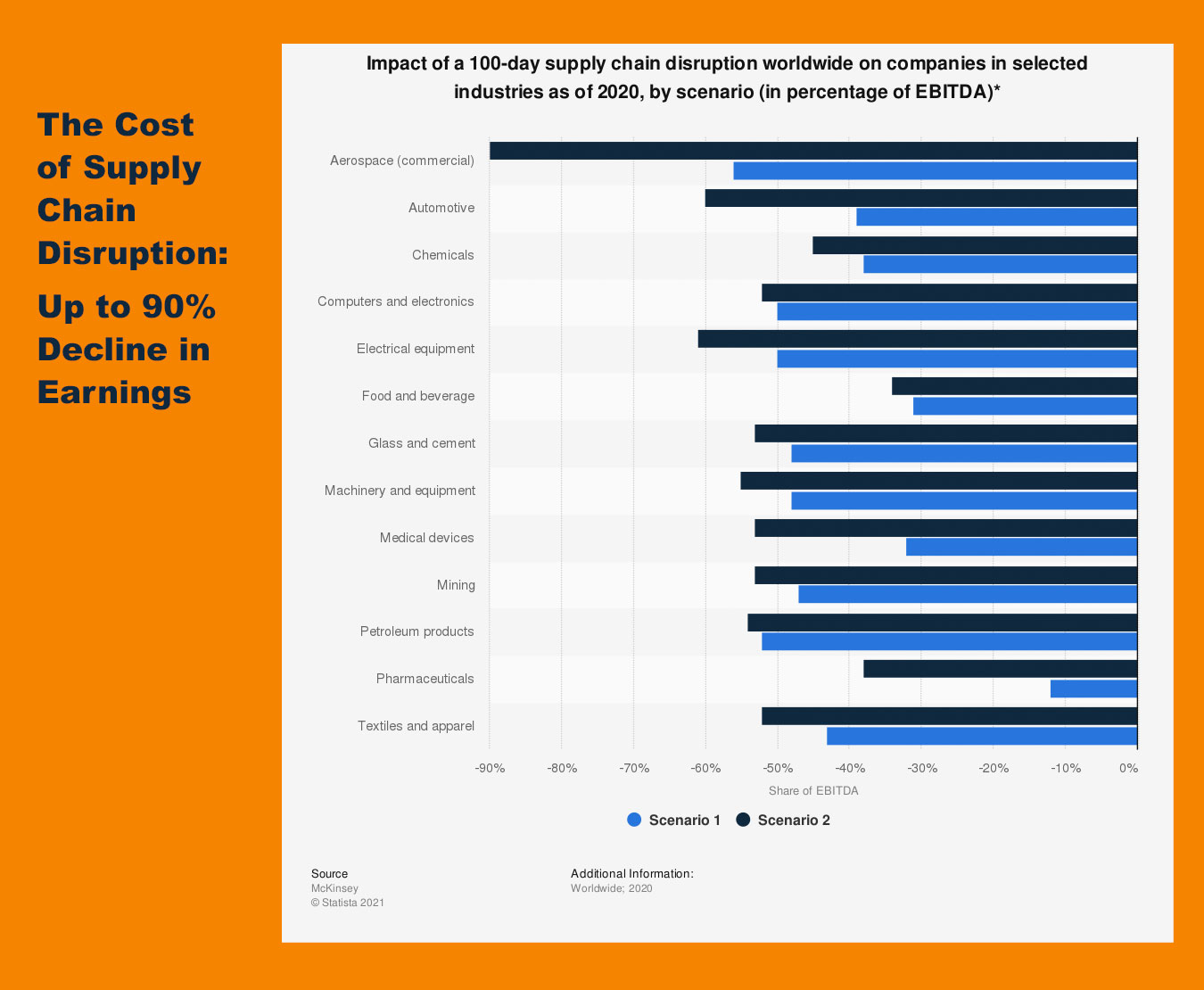

We didn’t need Resilinc to tell us that the supply chain disruptions from the COVID-19 pandemic event were “severe.” However, it is noteworthy that Resilinc has never ranked an event at that level before. A record number of factory fires and extreme weather events have generated further disruptions. Many industrial manufacturers remain focused on ways to build a resilient supply chain.
Digitization of the supply chain accelerated during the pandemic as global manufacturers recognized the value of real-time data. The increased efficiency and transparency of digital supply chains benefit companies that can make that investment. However, the costs of digitization may not be feasible for many SME companies at this time.
Consolidations, mergers, and business sales also increased as companies sought cash to stabilize their business or optimize the supply chain and retain customers.
Here are eight non-digital strategies to protect your business from future supply disruptions.
I hope these tips will help you in your efforts to build a resilient supply chain. As a partner with industrial manufacturers, we’re available to consult with you directly. Contact us to set up a conversation.
–parin
Managing Partner, StratMg
With over two decades of experience, Parin leads an expert demand-generation agency, StratMg, that helps industrial manufacturing clients achieve unambiguous and quantified organic sales growth across the US, EMEA & APAC.
Parin has built & positioned StratMg to be a value-added marketing services provider that strives to create a culture of quantified sales-driven marketing initiatives leading to sustained business growth through channel management, diversification, new customer acquisition and retention strategies and tactical execution.